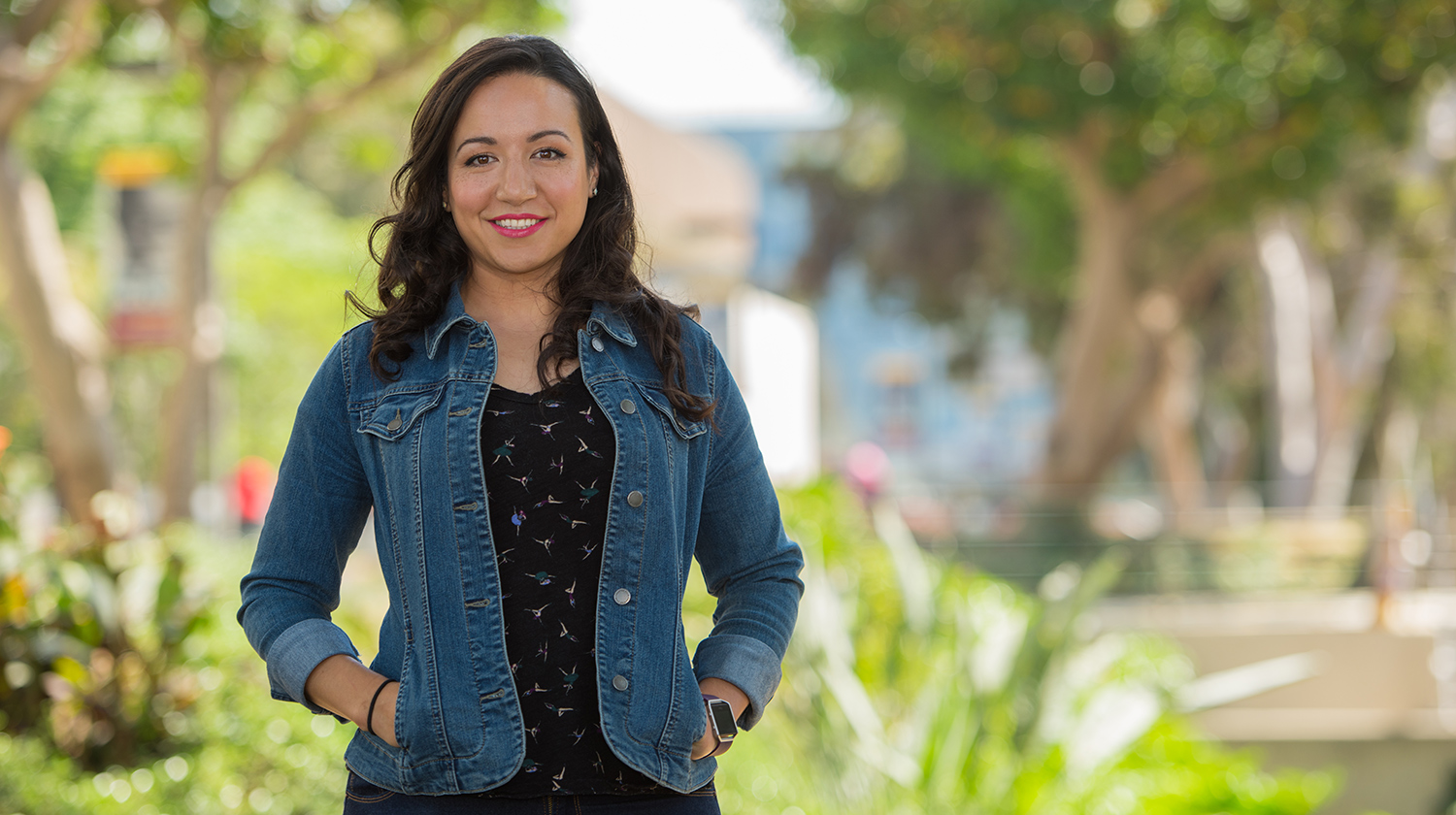
When Magdalena Lara was tasked to milk the five goats on her family’s farm each morning before school, or help her mother make yogurt and cheese using the goat’s milk and active bacteria cultures, it turns out she was doing more than childhood chores; she was cultivating a curiosity of the natural world that would lay the groundwork for her future studies.
“I would always ask my family why and how things worked. I wanted to know more when I found out about something new,” recalls Lara, the oldest of six siblings raised by immigrant parents on the one-acre farm in Norco, Calif.
This month, Lara graduates from California State University, Dominguez Hills (CSUDH) with a bachelor’s degree in molecular biology and has been accepted to Stanford University’s doctoral program in biology, which she begins this fall.
To excel at Stanford, Lara will fall back on the research skills she developed at CSUDH studying the nectar of Asclepias species, or milkweed, under the direction of Kathryn Theiss, assistant professor of biology who researches plant biology, and Karin Kram, assistant professor of microbiology. She will also take advantage of her acceptance into the National Science Foundation (NSF) Graduate Research Fellowship Program.
Lara was chosen for the NSF fellowship from more than 12,000 applicants nationwide. The program supports outstanding graduate students in NSF-supported science, technology, engineering, and mathematics disciplines who are pursuing research-based master’s and doctoral degrees at accredited United States institutions.
The prestigious fellowship will pay for three years of full-time tuition, along with health insurance, a monthly stipend, and more at Stanford, where she will work in the lab of Tadashi Fukami, associate professor of biology. Fukami is a renowned expert in ecological and evolutionary community assembly.
“It’s really an honor, and I can’t wait to start my graduate career working in the Fukami Lab and seeing where I go from there. They basically told me to just tell them what interests me and they’ll make it happen, which was incredible,” said Lara, who is also a Research Initiative for Scientific Enhancement (RISE) student at CSUDH “The lab and the fellowship will open up an entire community of people who I would otherwise never have access to. We also get access to NSF’s supercomputer. You get all the tools when you get chosen, and I really look forward to taking advantage of it.”
At CSUDH, Lara’s collaborative research projects with Theiss and Kram involved characterizing the explored the potential for natural products in the mostly unexplored microbiome in the nectar of milkweed, the monarch butterfly’s only caterpillar host plant. Their work looks at the positive and negative effects of the relationship between the flower, the nectar and its microbes, and the floral visitors (butterflies, honey bees, wasps, etc.) across urban heat island gradients.
During the summer of 2017, Lara conducted research with Paul Jensen, a biology professor at the Scripps Institute of Oceanography. At Scripps, the goal of the research she assisted with is to discover new natural products or chemicals that could potentially be used as antibiotics, anti-cancer drugs, or medicinal therapy.
“I melded the chemical analysis that I learned at Scripps with how we’ve characterized the microbes of the nectar here [at CSUDH], and apparently the NSF liked it,” she explained. “It was amazing how it worked out. Dr. Theiss and Dr. Kram are just brilliant. They helped me write the application.”
By 2015, the destruction of milkweed habitat had caused the butterfly’s North American population to plummet by more than 90 percent.
“To make up for the loss of habitat there have been campaigns to get milkweeds planted in cities–around people’s homes, or next to businesses,” said Lara. “Our research looked at the non-native species of Milkweed, which are yellow and red flowers–real pretty– and why people buy them more than the native species. We wanted to see what kind of microbes were in the nectar of those flowers to better understand what impact they might have on their host’s plant-pollinator relationship, and on the native plants and pollinators in the area.”
Lara can’t wait to get to Stanford and start doing research. Her long-term professional goal is to teach at the college level.
“Ultimately I would love to be a Dr. Theiss or a Dr. Kram–great teachers who bring to life what they teach,” said Lara. “I can envision doing some research, and having a research lab with my students entrenched in a project. That’s an exciting image for me because you never know how you might influence someone, what they’re going to end up doing, or how they might change the world.”